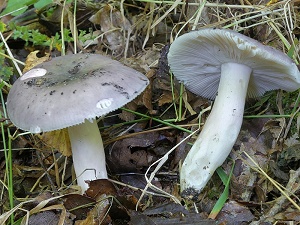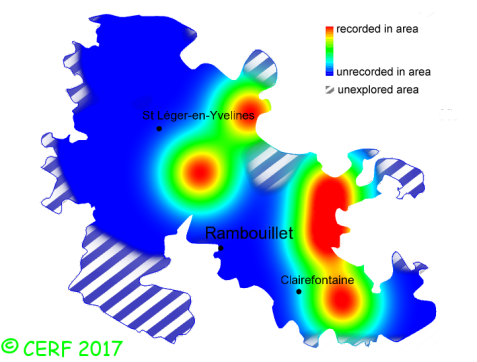| Russula ionochlora Romagn. |
|
|
|
|
|
|
The cap is roundel of grey blue to violet grey, and almond green at the centre, with a violaceous ring in between the two; sometimes mixture of blue and green, convex then flattened and a bit depressed; its margin is striate when dry or smooth. The cap surface is smooth, not viscid nor sticky. The stem is white to lilac-pink or violet, without ring. The flesh is white, unchanging; its taste is mild, slightly hot in gills; the odour is not distinctive or slightly fruity; its texture is grainy (breaking like a chalk stick). The gills are white to pale cream, adnexed to almost free, crowded (nb of gills per 90° ~ 36 ). The spore print is pale cream (B-C). This species is mycorrhizal. It grows on the ground, in broad-leaved woods, most of the time with beech, sometimes oak. The fruiting period takes place from June to November.
Chemical tests : flesh becoming more or less pink when in contact with iron sulphate; positive reaction to Gaïac (pale blue). Distinctive features : two-toned cap, grey-blue at the rim and greenish at the centre; flesh with slightly hot taste in the youth, mild later; bruises and insect bites surrounded by reddish; flesh turning salmon pink when in contact with iron sulphate; with beech Russula ionochlora is quite rare and localised in the forest of Rambouillet, and is infrequent, more generally speaking . | ||
|
page updated on 14/01/18

